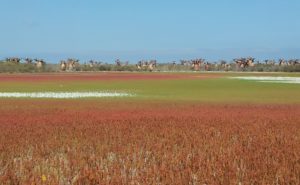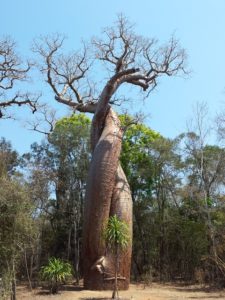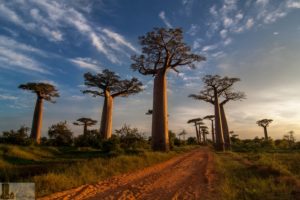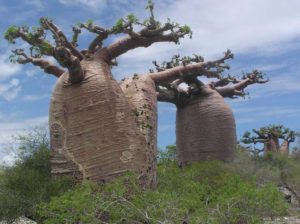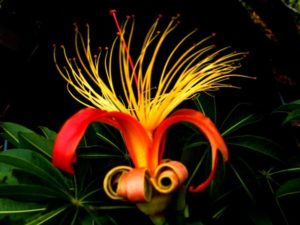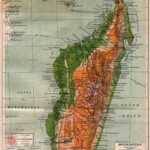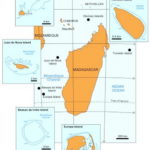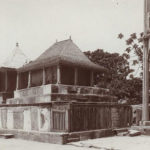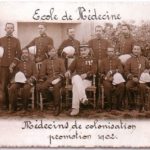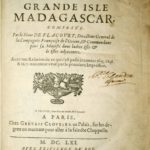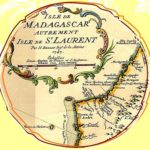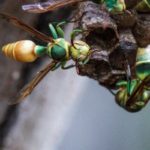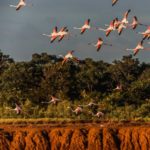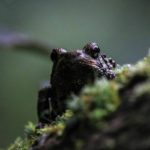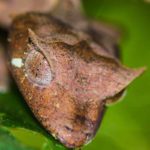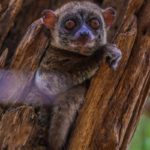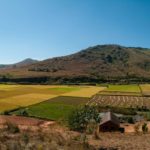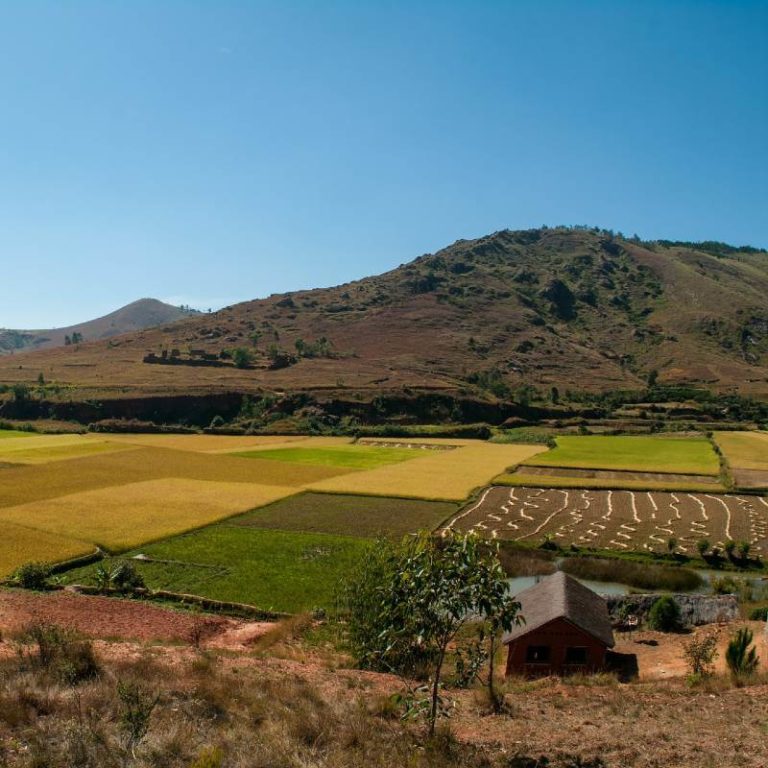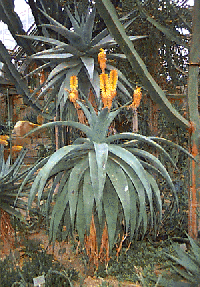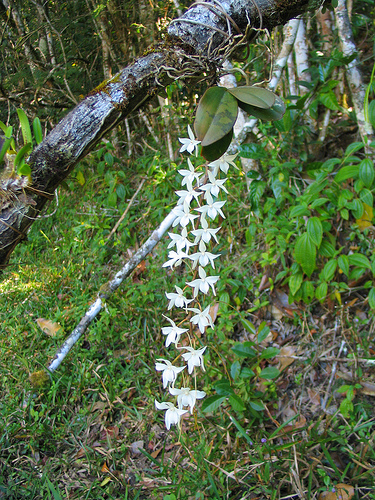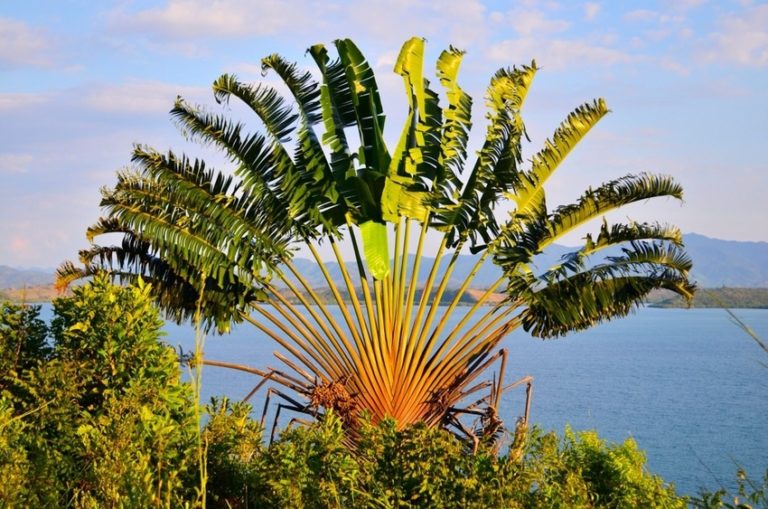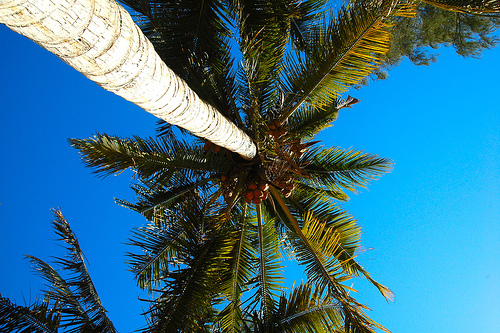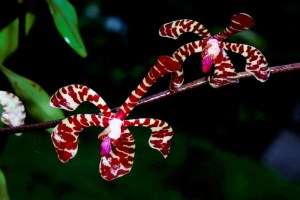The baobabs baobab trees in Madagascar
Scientific name: Adansonia
Order: Malvaceae (Malvales)
Family: Mallow family (Malvaceae)
Subfamily: Wooly tree family (Bombacoideae)
Genus: Baobabs
The Baobabs or Baobabs (Adansonia) are a genus of distinctive, large, and often bizarrely growing Deciduous trees. They have adapted to dry areas, some species can survive with rain showers of less than 500 mm per year. This Giant trees contain up to 80% of water in the trunks and branches. To make such a Gigantism with these extreme conditions to develop, the baobabs have also developed other survival strategies.
The growth takes place only during the Rainy season takes place. In summer, just before the onset of the rainy season, 5-11-pinnate elliptical leaves sprout. They are usually leathery and fully develop within four weeks. If the rains fail or the rainfall is insufficient, development is delayed. For the first time at the age of 8-10 years, it forms bizarre flowers. The flower cup is silky inside, cream or pinkish red to red. The five petals are creamy white, yellow or red and enclose numerous white or yellowish stamens (100-1100). The baobab forms spherical, ovoid, or ovoid-cylindrical fruits. They are large, dry and many-seeded berries, which usually do not burst. The fruits of Adansonia rubrostipa is offered for consumption in the area of Toliara. Often you can see stakes hammered into the trunks, which facilitate climbing up into the crowns to reach the ripe fruit.
In the water scarce areas are also sometimes cut depressions in the trunks to access the sap accumulated in them After the onset of the dry season, they shed the foliage and thus survive the droughts, often for months.
The Baobabs are used despite their morphological peculiarities sometimes compared to other trees that have developed similar survival strategies and also live in desert-like environments. These include Flame trees (delonix), Moringa (Moringa Drouhardii), Farafatse (Givotia madagascariensis), Kapok trees ( Ceiba pentandra) and even the tiny Pachypodiawhich are often offered here as dwarf baobabs.
Of these trees, however, only the kapok tree (also called the wool tree), which is also called fromager here, has any relationship to the baobabs of Madagascar. Both belong to the same subfamily Bombacoideae an.
Worldwide there are only 9 Baobab species and 7 of them are endemic to Madagascar. The Madagascar Baobabs are all registered on the red list of the IUCN, abbreviation for International Union for Conservation of Nature and Natural Resources, and 3 species are currently threatened with extinction.
Adansonia madagascariensis
Adansonia rubrostipa
Adansonia za
These could be replaced by the end of 2050 by climatic changes of temperatures and biotopes are eradicated. However, the climatic conditions are not the only threat to the life of these Giants of Madagascar flora: The Fire Rohdung has dramatic consequences on the population of thorn forests which are also vital for the population of baobabs. Where the Dry Forests have disappeared, where the baobabs have lived in a kind of symbiosis for centuries, they are no longer able to survive in the long term. Like for example the legendary Baobab avenue near Morondava.
In Madagascar there are nevertheless still numerous possibilities to Baobabs in their natural habitat to see. The Baobab avenue is the most famous attraction, but there are places where you can admire much larger, older and rarer baobabs in groups up to hundreds, almost forest-like, and in all kinds of shapes.
We offer a modulable Baobab Tour along the west coast of Madagascar, where you can see not only thousands of these Giants of the flora to see, but above all also the Baobabs in their original environment, so in the Thorn Forest, surrounded by Euphorbias, Didieraceae and other plants of the dry tropics, can experience.
Of course, these baobabs are not as easily accessible in Madagascar as the Baobab amoureux or the Baobab Allee but instead, in Tsimanompetsotse, there is a baobab of the species Adansonia rubrostipa, called grandmother here, whose age is estimated at over 1600 years. A specimen of rare, bizarre beauty.
The baobab with the largest girth (Adansonia za, with 23 m girth) used to be located near Ampanihy in the south of Madagascar to a much larger one at Morombe was discovered. The largest of its kind, a Adansonia grandidieri with a perimeter of 27, 3 m is located near the village of Andombiry (northeast of Morombe).
The seven species of baobabs in Madagascar:
Adansonia digitata
This species also occurs in the dry Savannahs of Africa and in the Comoros archipelago present. They reach a height of 25 m, the trunk can be single or double, gray bark and elongated gray-yellow fruits characterize this species. In Madagascar they are mainly found in the northwestern part but they are also sporadically found in the Tulear areas, Morombe and Morondava to see.
Adansonia grandidieri
Massive tree with a morphology adapted to the extreme conditions of the region around Andavadoaka and Morombe and to the saline soils perfectly adapted to the region. Can be up to 25m in diameter, its range goes from the Tsiribihina area across the valley along the River Mangoky until after Salary in the south.
Adansonia grandidieri is in its natural environment from the Extinction threatened. There are 4 protected areas where this species can still be seen:
Kirindy Mitea, Mikea, Andranomena and in the Baobab Alley.
Adansonia suarezensis
This very small baobab with amazing shapes always grows near the Mozambique channel from Itampolo along the coast to the Moramba bay 800km further north. Adapted to extreme heat and drought, this baobab grows together with Euphorbia and Alluaudias in dense thorn forests in a corridor no more than 20 km wide along the coast. You can see it in Andranomena, Tsingy from Namoraka and Tsimanompetsotse marvel
Adansonia za
This way of working with the largest distribution area and the best abilities to adapt to very different environments and living conditions, it can be found in the dry thorny forests the Savannahs up to the moist mixed forests in the north. To be found in Zombitse, Andohahela, in the Mikea Forest, Ankarafantsika, Kirindy Mitea, Andranomena and Tsimanompetsotse.
Adansonia madagascariensis
The distribution area is in the northwestern part of Madagascar, always in the immediate vicinity of rivers or the sea. The Distribution of fruits and seeds depends on water which is also a logical explanation for the discovery of 4 baobabs of this species on the Mayotte island would be.
This endangered species can be found in Nosy Hara, Ankarana and in the special reserve of Analamerana
Adansonia perrieri
The rarest baobabs from Madagascar were first seen 50 years ago, they hide in dense forests in the very north of the island. Currently only about 200 trees are known but possibly more are hiding in inaccessible areas. The species is extremely endangered and you can use them in Ankarana, Montagne d Ambre and Analamerana.
More on the topic Baobabs in Madagascar is also available under this LINK

